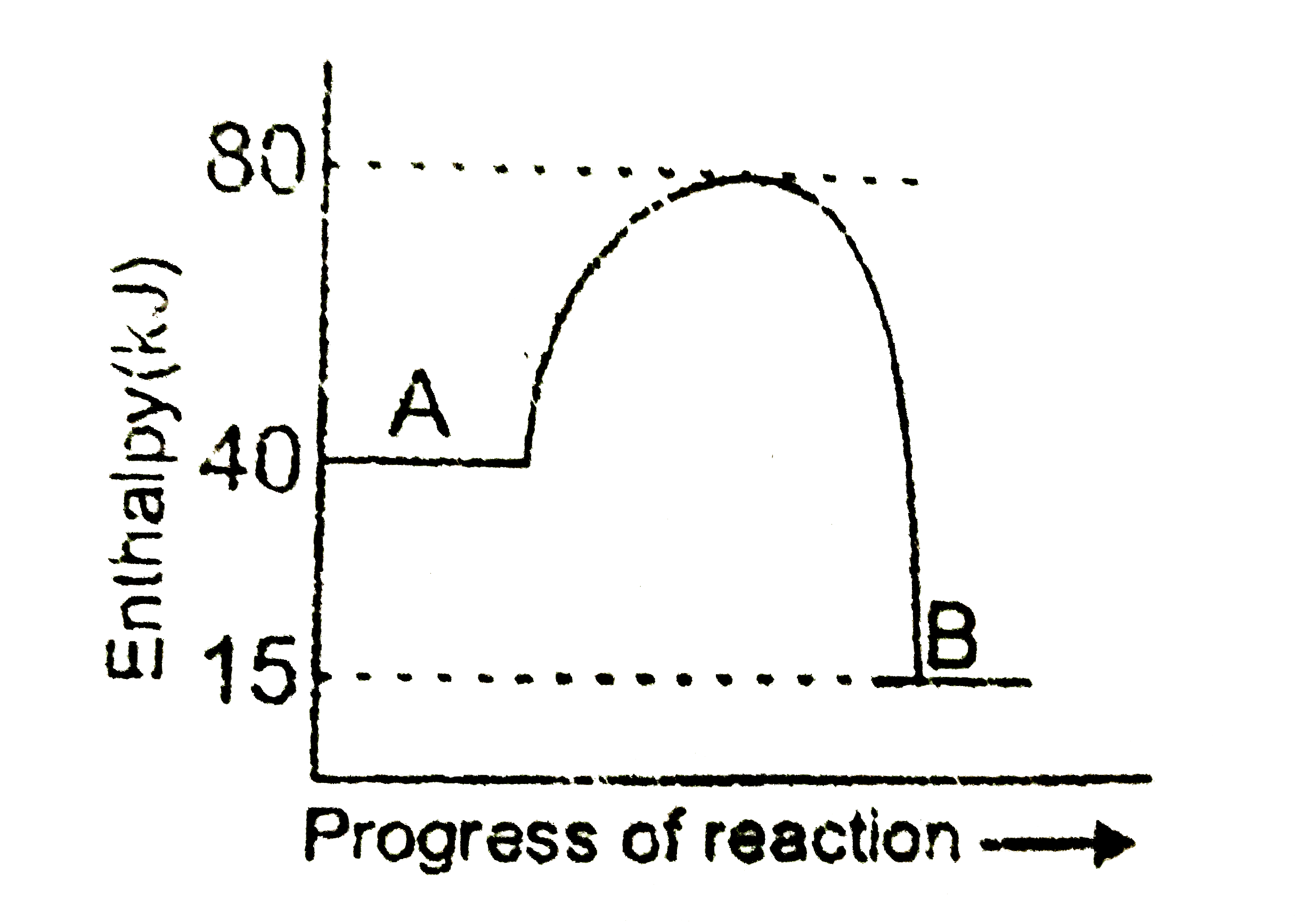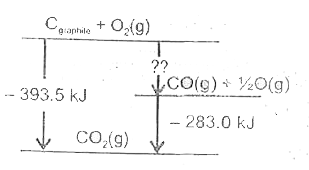The enthalpy change for the process
is called
Heat of vaporisation
Heat fo sublimation
Heat of allotropic change
Heat of atomisation
To determine the enthalpy change for the process C(graphite)→C(g), we can follow these steps:
Step 1: Identify the Process
The process involves converting solid carbon in the form of graphite to gaseous carbon.
Step 2: Understand the Type of Change
This transformation is a phase change from solid to gas. In thermodynamics, this type of phase change is known as sublimation, where a solid turns directly into a gas without passing through the liquid phase.
Step 3: Define the Enthalpy Change
The enthalpy change associated with this process is specifically referred to as the "enthalpy of sublimation." This term describes the amount of energy required to convert one mole of a solid directly into a gas at constant pressure.
Step 4: Conclusion
Thus, the enthalpy change for the process C(graphite)→C(g) is called the "enthalpy of sublimation."
Final Answer
The enthalpy change for the process C(graphite)→C(g) is called the enthalpy of sublimation.
---
The process involves converting solid carbon in the form of graphite to gaseous carbon.
This transformation is a phase change from solid to gas. In thermodynamics, this type of phase change is known as sublimation, where a solid turns directly into a gas without passing through the liquid phase.
The enthalpy change associated with this process is specifically referred to as the "enthalpy of sublimation." This term describes the amount of energy required to convert one mole of a solid directly into a gas at constant pressure.
Thus, the enthalpy change for the process C(graphite)→C(g) is called the "enthalpy of sublimation."
The enthalpy change for the process C(graphite)→C(g) is called the enthalpy of sublimation.
Topper's Solved these Questions
- THERMODYNAMICSBOOK - CENGAGE CHEMISTRY ENGLISHCHAPTER - THERMODYNAMICSEXERCISE - Multiple correct Answer Type
2 Videos
- THERMODYNAMICSBOOK - CENGAGE CHEMISTRY ENGLISHCHAPTER - THERMODYNAMICSEXERCISE - Exercises (Single Correct)
62 Videos
- THERMODYNAMICSBOOK - CENGAGE CHEMISTRY ENGLISHCHAPTER - THERMODYNAMICSEXERCISE - Exercises (Linked Comprehension)
74 Videos
- STOICHIOMETRYBOOK - CENGAGE CHEMISTRY ENGLISHCHAPTER - STOICHIOMETRYEXERCISE - Archives Subjective
33 Videos
Similar Questions
Calculate the enthalpy change for the process
CCl4(g)→C(g)+4Cl(g)
and calculate bond enthalpy of C−Cl in CCl4(g).
ΔvapHΘ(CCl4)=30.5kJmol−1
ΔfHΘ(CCl4)=−135.5kJmol−1
ΔaHΘ(C)=715.0kJmol−1, where ΔaHΘ is enthalpy of atomisation
ΔaHΘ(Cl2)=242kJmol−1
View SolutionThe enthalpy change for the reaction 2C(graphite)+3H2(g)→C2H6(g) is called
View Solution
Knowledge Check
Assertion : The enthalpy change for the reaction CaO(s)+CO2(g)→CaCO3(s) is called enthalpy of formation of calcium carbonate.
Reason : The reaction involves formation of 1 mole of CaCO3 from its constituent elements.A(a) If both assertion and reason are true and reason is the correct explanation of assertion.B(b) If both assertion and reason are true but reason is not the correct explanation of assertionC(c) If assertion is true but reason is false.D(d) If both assertion and reason are false.
If the enthalpy of combustion of diamond and graphite are −395.4kJmol−1 and −393.6kJmol−1, what is enthalpy change for the C(graphite)→C(diamond)?
View Solution4.8g of C (diamond) on complete combustion evolves1584kJ of heat. The standard heat of formation of gaseous carbon is 725kJ/mol. The energy required for the process
C(graphite) → C(gas)
C(diamond) → C(gas) are
View SolutionLook at the following diagram:

The enthalpy change for the reaction A→B will be
View SolutionA schematic representation of enthalpy changes for the reaction,Cgraphite+12O2(g)→CO(g) is given below. The missing value is

View SolutionThe enthalpy change for the reaction, C2H6(g)→2C(g)+6H(g) is X kJ. The bond energy of C-H bond is :
View SolutionThe enthalpy change for the reaction H2(g)+C2H4(g)→C2H6(g) is ……………… The bond energies are, H−H=103,C−H=99,C−C=80 & C=C=145K cal mol−1
View Solution18.0 g of water completely vaporises at 100∘C and 1 bar pressure and the enthalpy change in the process is 40.79kJmol−1. What will be the enthalpy change for vaporising two moles of water under the same conditions ? What is the standard enthalpy of vaporisation for water ?
View Solution
